Milanote vs Miro
Learn more about your options and pick the best tool for your team.
Unsure whether to choose Milanote or Miro? You've come to the right place.
Miro has been around since 2011. Today, it's one of the most popular whiteboard tools, with millions of customers worldwide.
Milanote, on the other hand, is a newer and lesser-known tool. Launched in 2017, it's tailored more toward creative projects, offering a visual way to organize ideas.
But which one is better, and what are the specific differences? In this article, we will take a closer look at both Milanote and Miro and examine their strengths and weaknesses to help you make the right decision for your company.
Milanote and Miro compared
Miro and Milanote share many similarities, but they also have several fundamental differences that need to be kept in mind when making a decision.
The main difference between Miro and Milanote is their target users and primary functionalities. Miro is a versatile and feature-rich tool designed for broad use cases across various industries, while Milanote is tailored more toward creatives and designers, emphasizing a visual approach to project management and idea organization.
Ultimately, it will all come down to your unique needs, preferences, and workflow, as there is no one-size-fits-all solution when it comes to productivity software. And if you're having trouble choosing between Miro and Milanote, keep in mind that they aren't your only options. There are many other excellent tools that may turn out to be an even better fit for your needs.
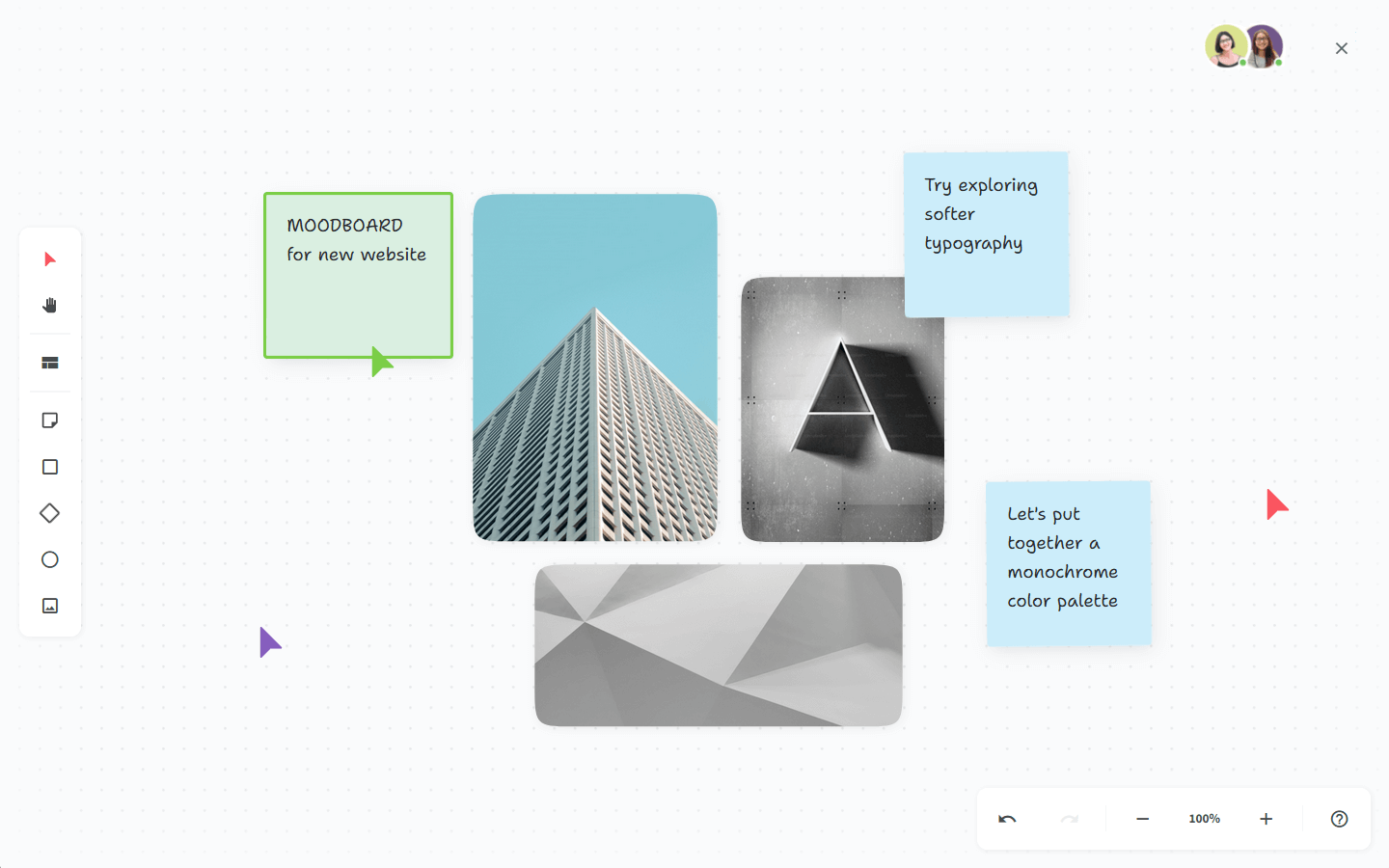
To make the most informed decision, let's first dive deeper into what Milanote and Miro have to offer, taking into account their strengths, limitations, notable features, pricing, and user reviews. We will also have a look at other alternatives you may want to consider.
Milanote
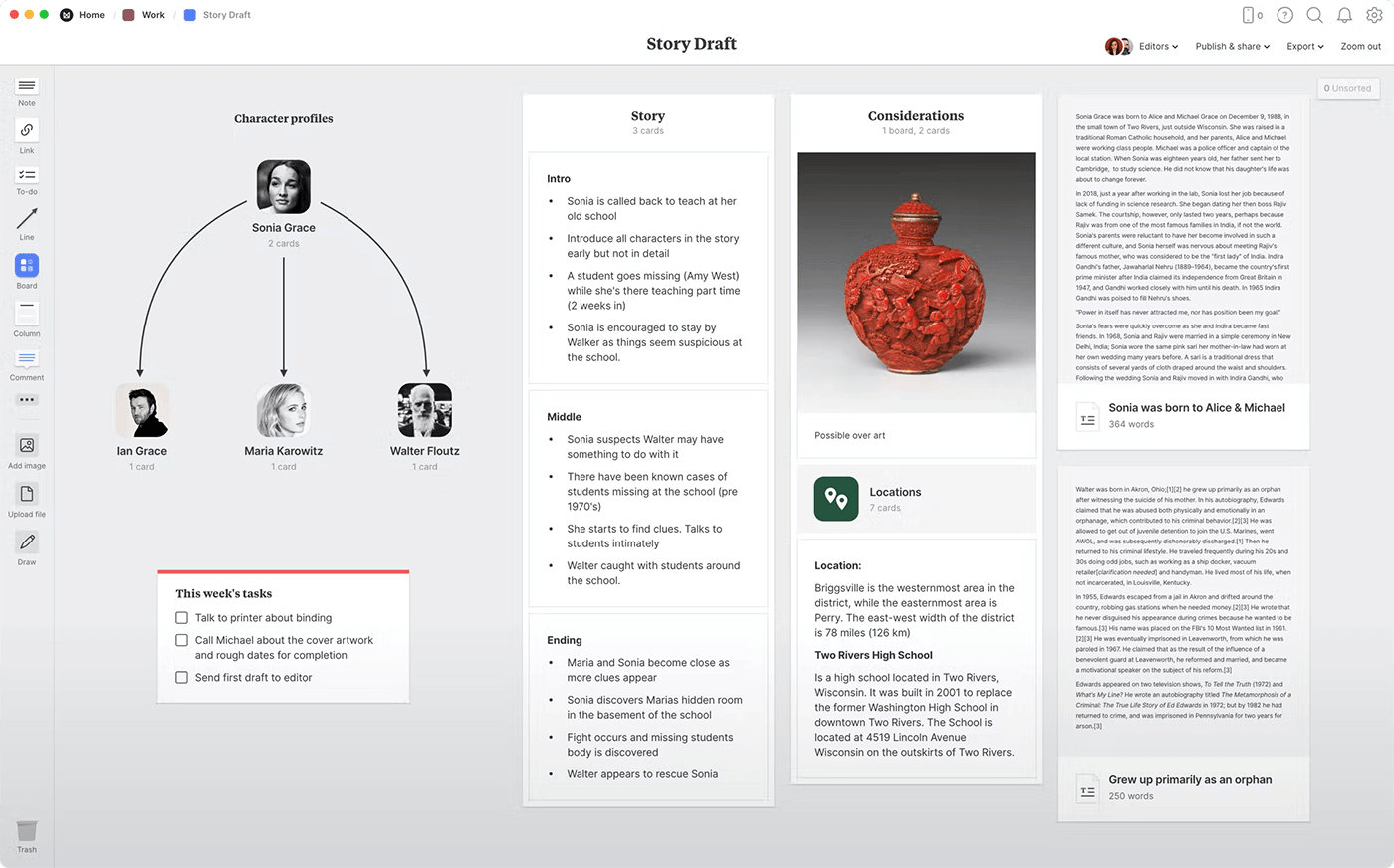
Pricing: Free, advanced features starting from $9.99/user/month
Rating on Capterra: 4.7/5
Milanote is designed with creatives in mind, including designers, writers, and marketers. It allows you to drag and drop images, text, and links onto a flexible canvas and organize them in a way that matches your workflow.
Milanote can be a useful tool if you prefer a visual approach to project management. However, if you need more advanced collaboration features, Milanote might not meet all your needs.
Why you might prefer Milanote over Miro:
Milanote’s features are tailored to the needs of creatives, such as moodboarding, mind mapping, and storyboarding.
Milanote combined note-taking and visual collaboration in one tool.
Milanote’s web clipper extension lets you save text, images, and links directly from the web into your boards, making it easy to collect inspiration or research materials as you browse.
While not as feature-rich as some dedicated project management tools, Milanote offers simple task management features that can help you keep track of to-dos and deadlines within your creative projects.
What users say about Milanote:
"As the design lead of a team, I use Milanote to create briefs for my team where they have all the info necessary to do their creative work. It's a way for them to have something to look back to and continue creating. I like how visual it is and fits right to my target audience: fellow creatives."
Looking for more tools similar to Milanote? Check out this list of Milanote alternatives.
Miro
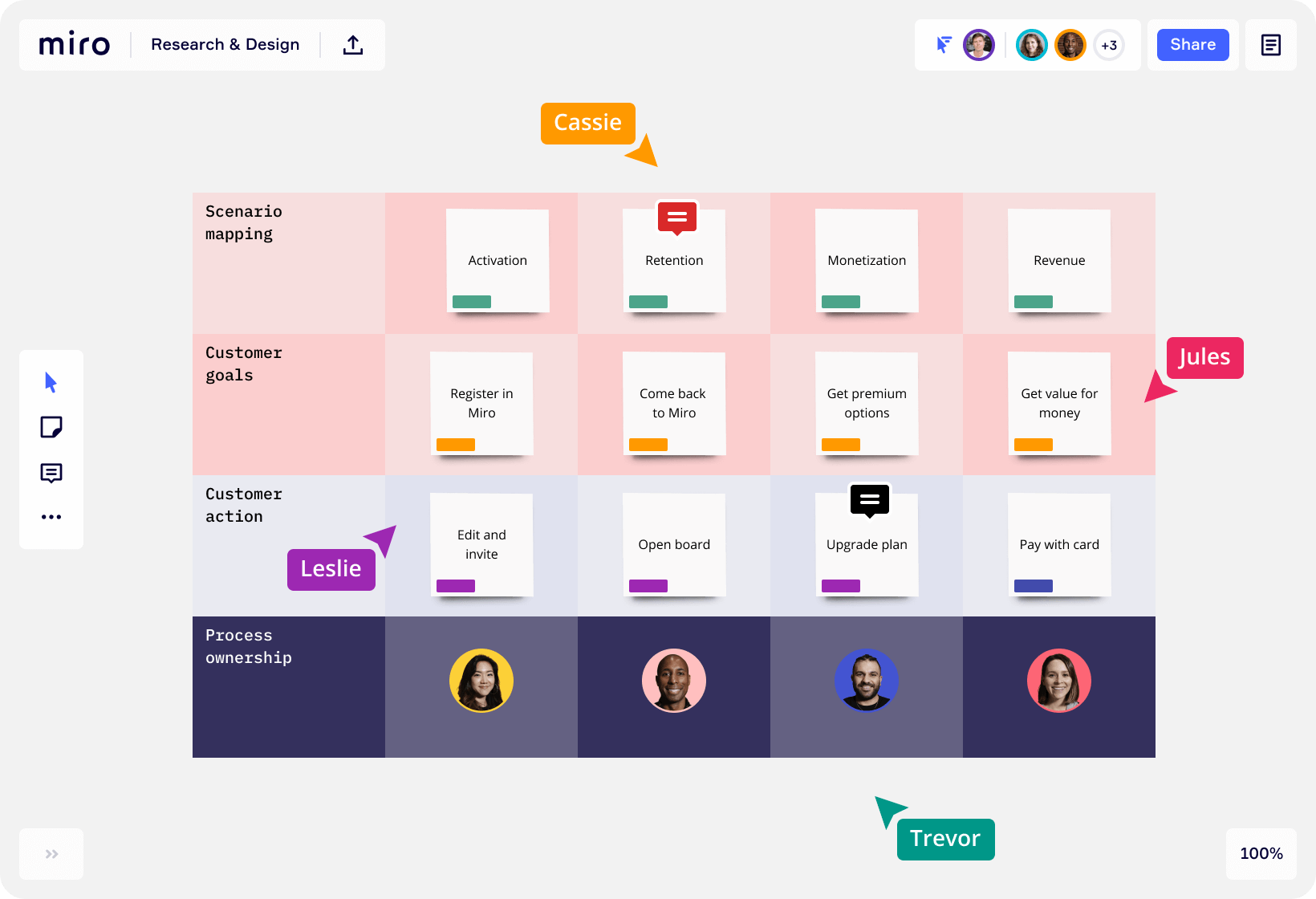
Miro is a robust tool that supports extensive collaboration features suitable for large teams and complex projects. It supports a variety of use cases, from brainstorming sessions to complex project management.
If you're looking for a tool that offers a wide range of templates, integrations with popular tools like Slack and Asana, and features such as sticky notes, drawing tools, and video conferencing, Miro might be the right choice for you.
Why you might prefer Miro over Milanote:
Miro offers a wider range of features including mind mapping, flowcharts, and Kanban boards.
Miro seamlessly integrates with more tools than Milanote.
Miro has a large user community and extensive resources, including tutorials and webinars.
Miro provides more advanced security options, including data encryption and single sign-on (SSO).
What users say about Miro:
"I really like how there is an infinite board that you can just freeform populate with ideas and visuals and the fact that you can live collaborate is what sold it to me. I switched from Milanote and I haven't regretted it since."
Looking for more tools similar to Miro? Check out this list of Miro alternatives.
Other alternatives
It should be mentioned that your options are not limited to just Milanote and Miro. For example, if you are looking for a tool that combines the best features of Milanote and Miro in a simpler, more lightweight package, Nuclino might be the solution for you.
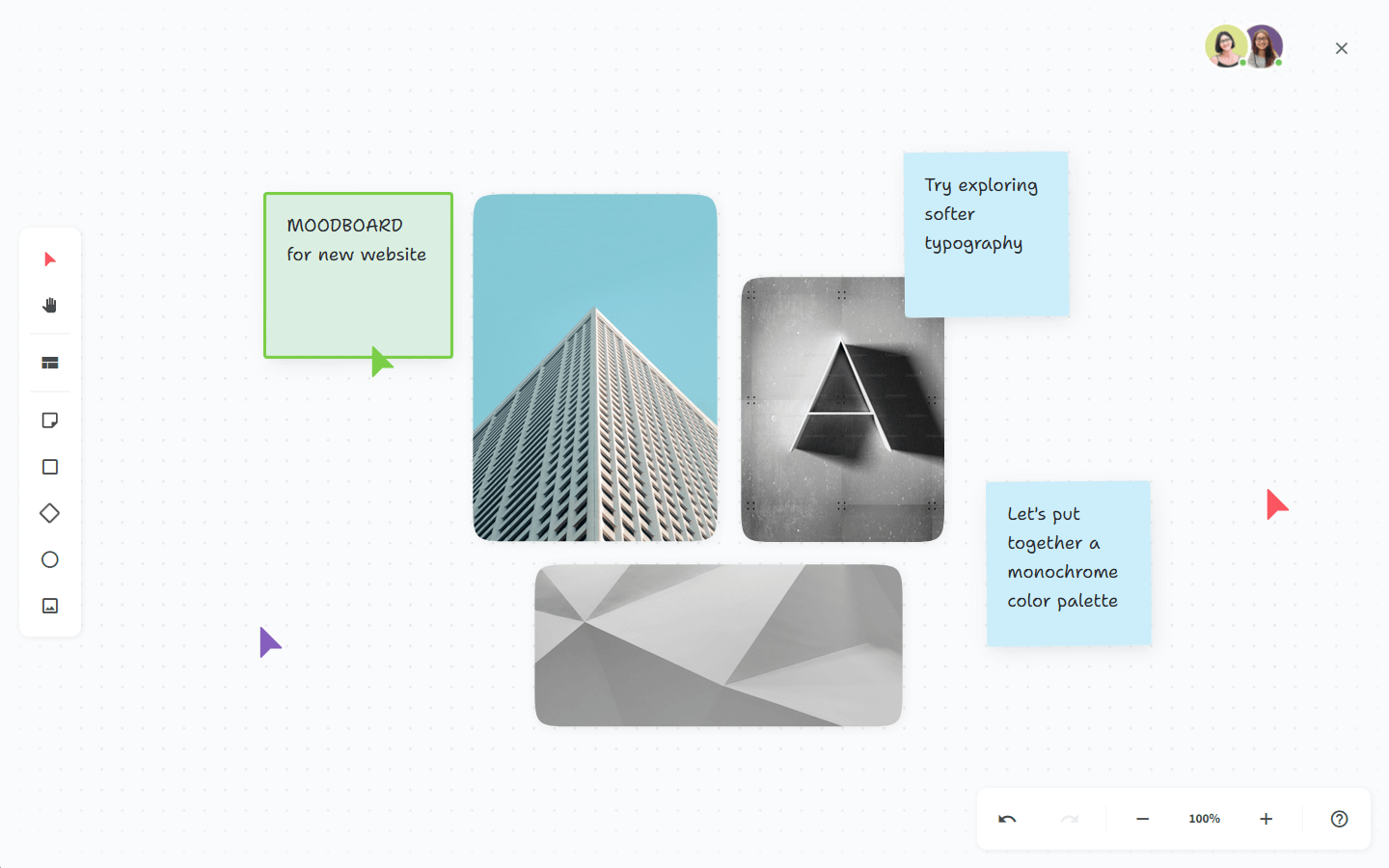
Nuclino is more than just a digital whiteboard or a diagramming tool — it's a unified workspace for all your team's knowledge, documents, and projects. It can replace not only Miro and Milanote but also tools like Trello, Google Docs, and more.
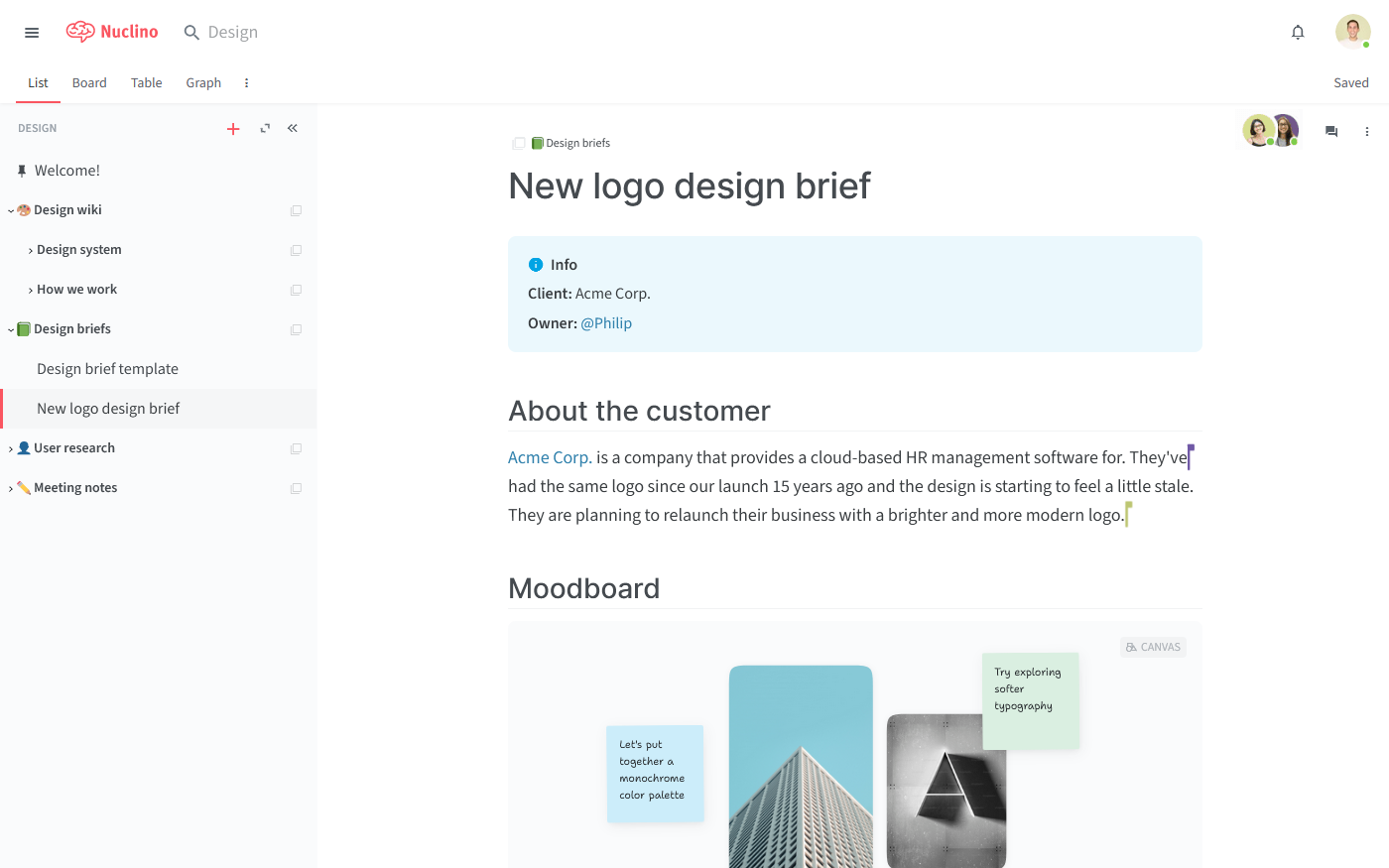
Like Miro and Milanote, Nuclino supports collaboration on an infinite canvas, allowing you to create diagrams and flowcharts, brainstorm ideas with sticky notes, and build moodboards.
However, while in Miro and Milanote each board is a separate entity, Nuclino integrates the collaborative canvases directly into your documents. This means you can combine diagrams, notes, images, videos, to-do lists, and more in one place, without switching tools.
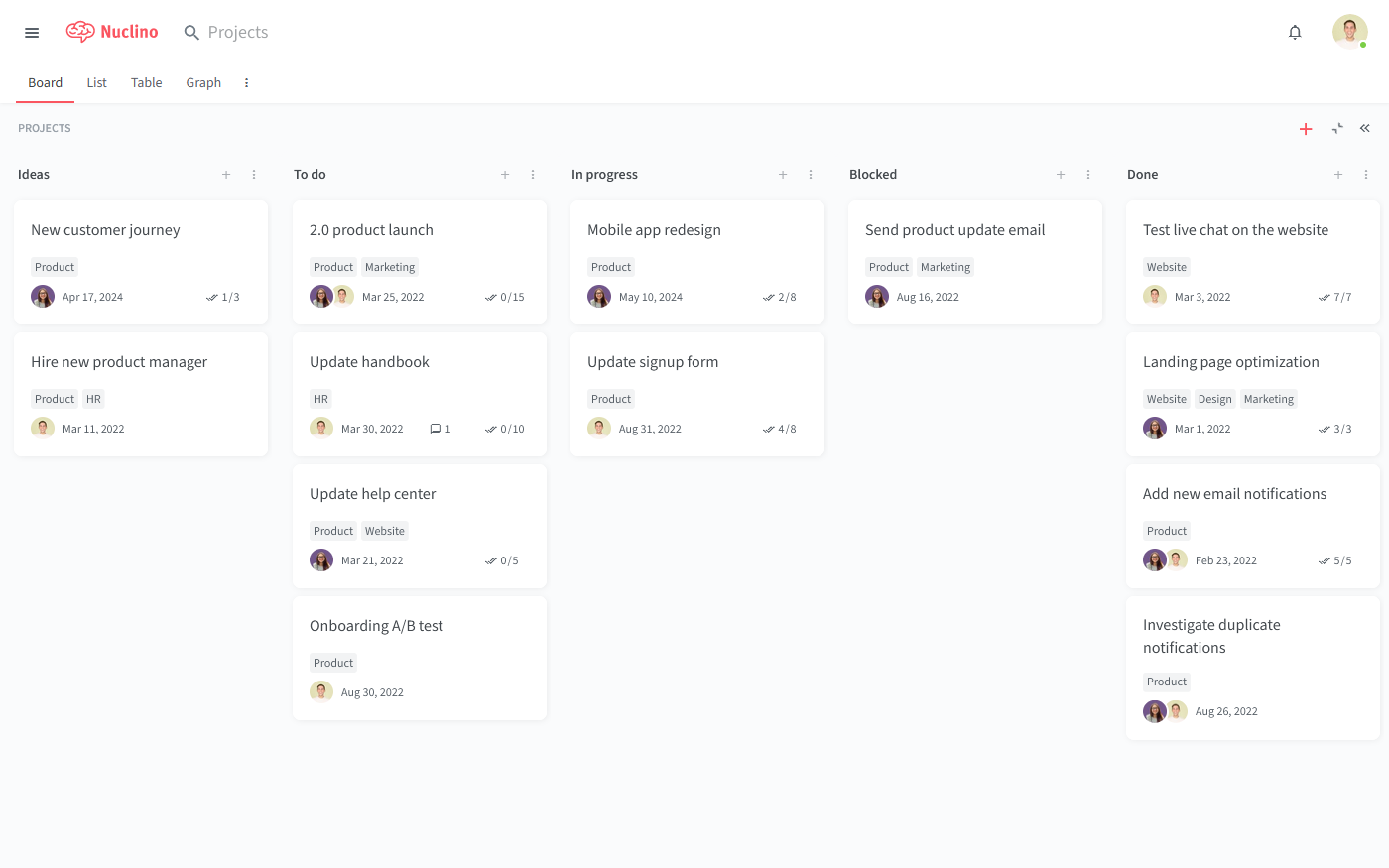
The documents in Nuclino can be organized in a variety of ways, including a nested list, a Kanban board, a table, or an interconnected graph. This allows you to tailor the workspace to your team’s workflow, whether it’s managing projects, brainstorming, taking meeting notes, or building an internal knowledge base.
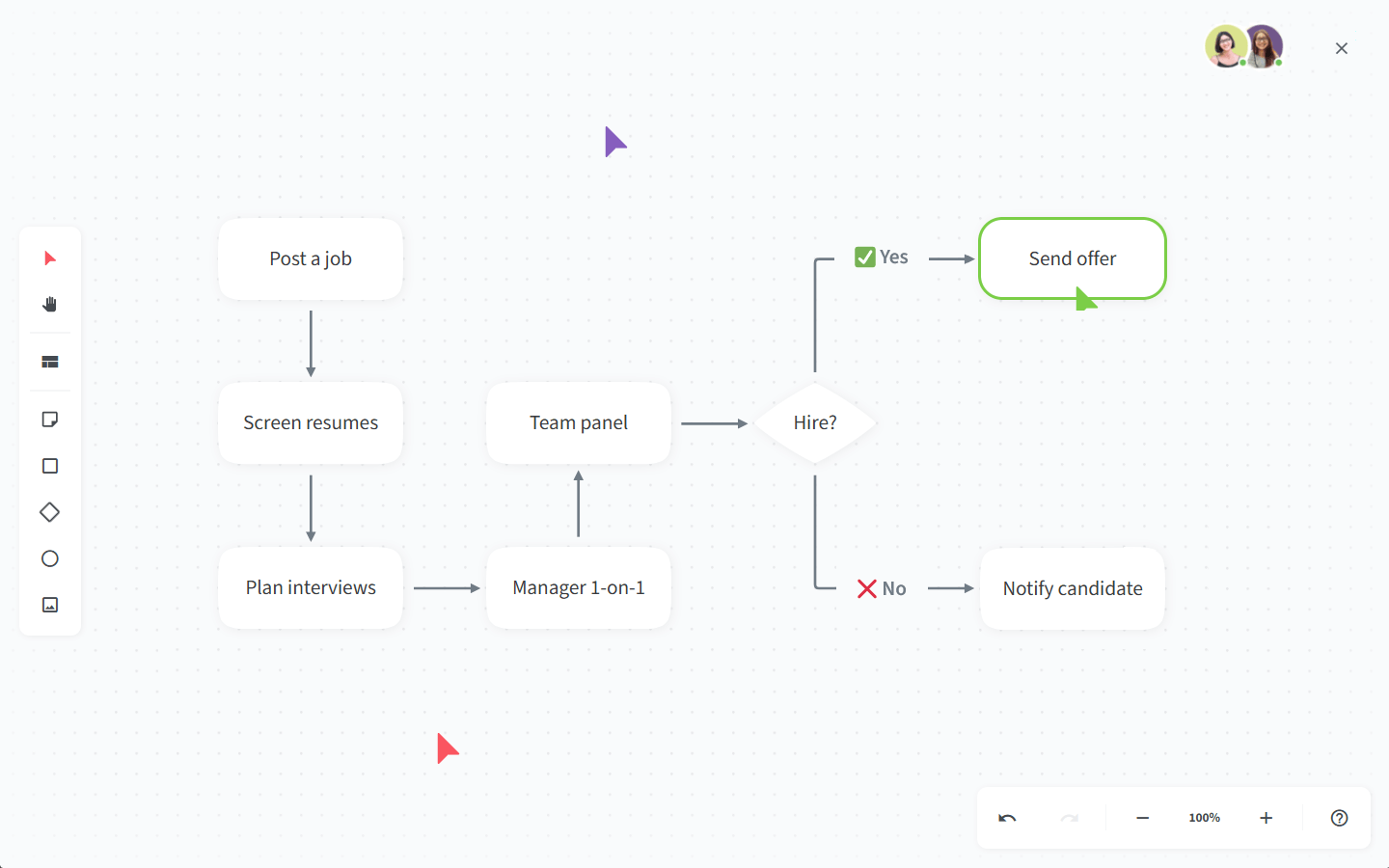
At the same time, Nuclino is designed to be straightforward and easy to use in every way. New users may find it less overwhelming than Miro, which can be feature-heavy. It offers a clean, intuitive interface that helps you stay focused on your work.
Milanote vs Miro: So which is better?
There is no objectively "best" choice when you compare Milanote and Miro. Both solutions are popular for different reasons, and depending on your unique requirements and preferences, one of them might be a much better fit than the other.
Miro is a powerful tool for teams needing extensive diagramming and visual collaboration features. Milanote may be better for creative professionals who prefer a visually focused, intuitive workspace.
On the other hand, if you like the idea of replacing multiple tools with a single solution for all your docs, projects, diagrams, and whiteboards, consider exploring other alternatives, such as Nuclino.
We hope this article has made your decision a little easier.
Ready to get started?
